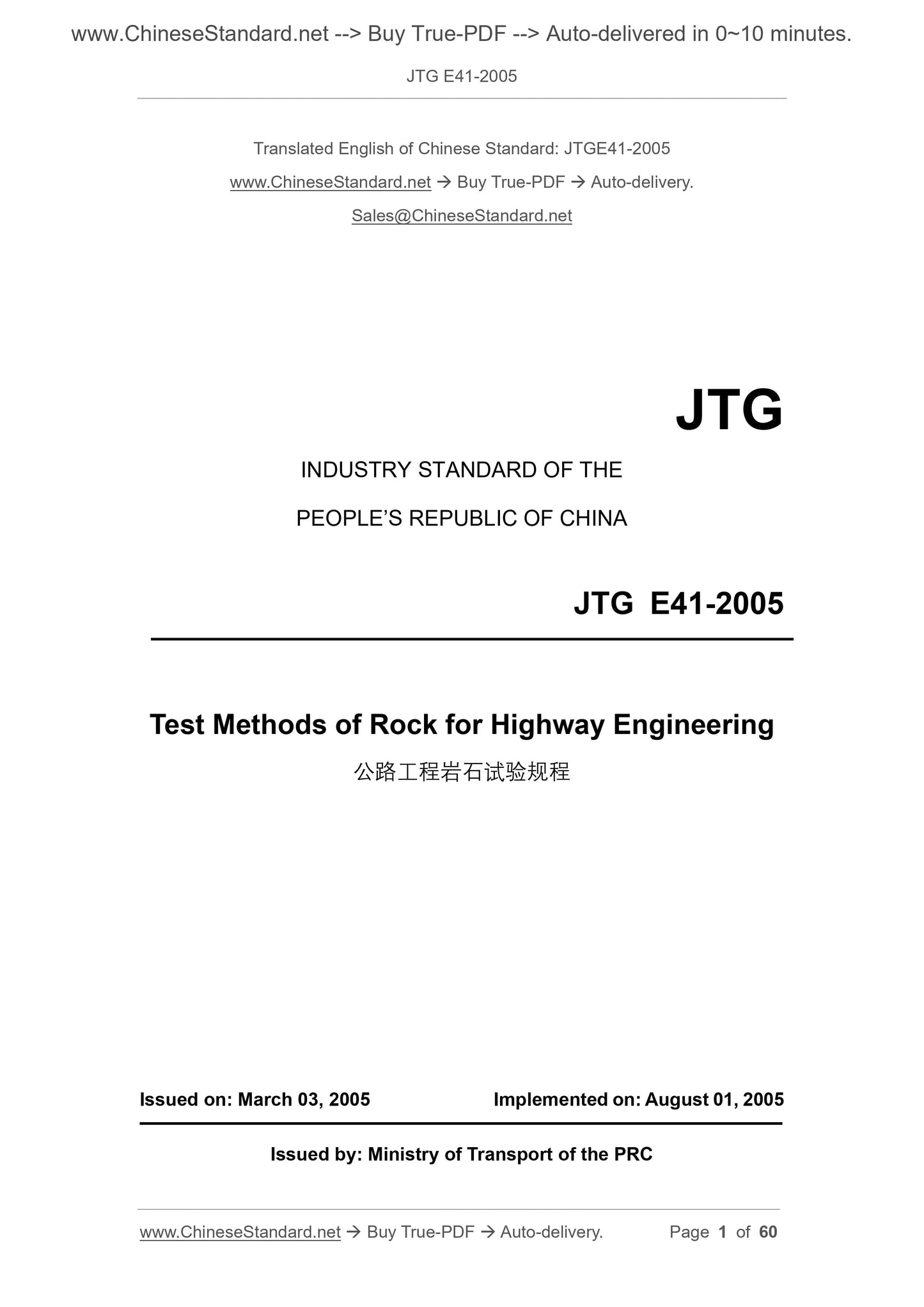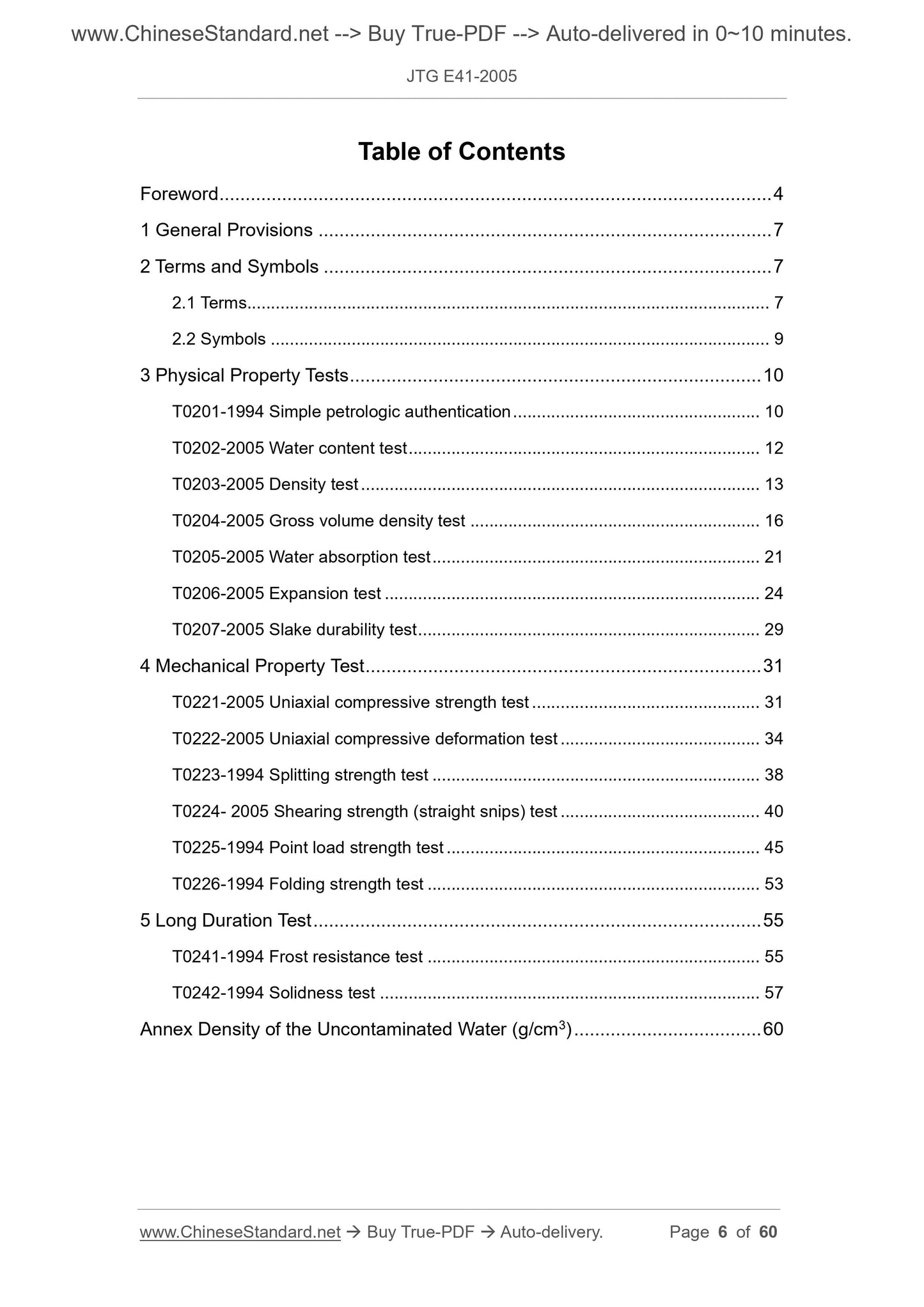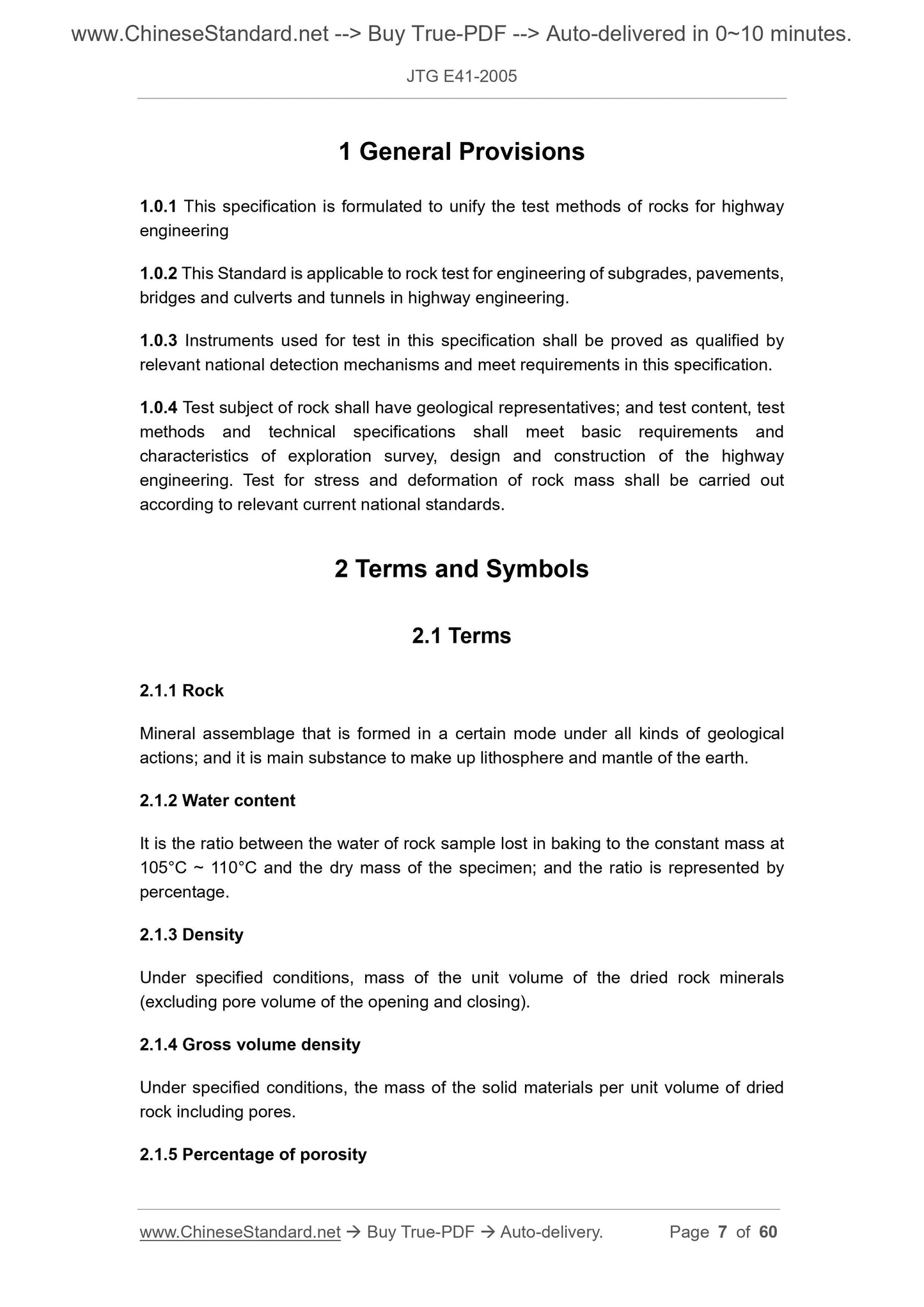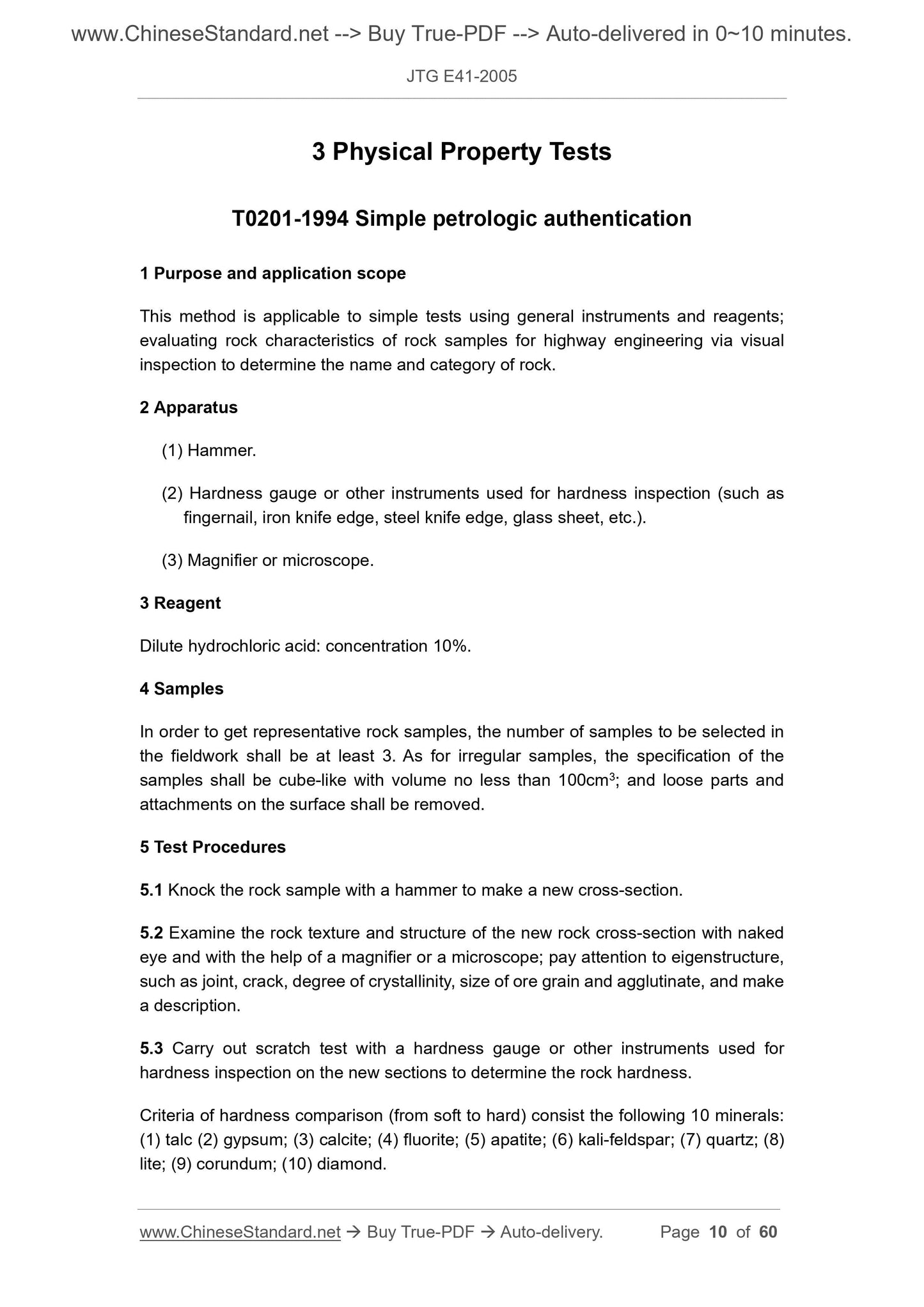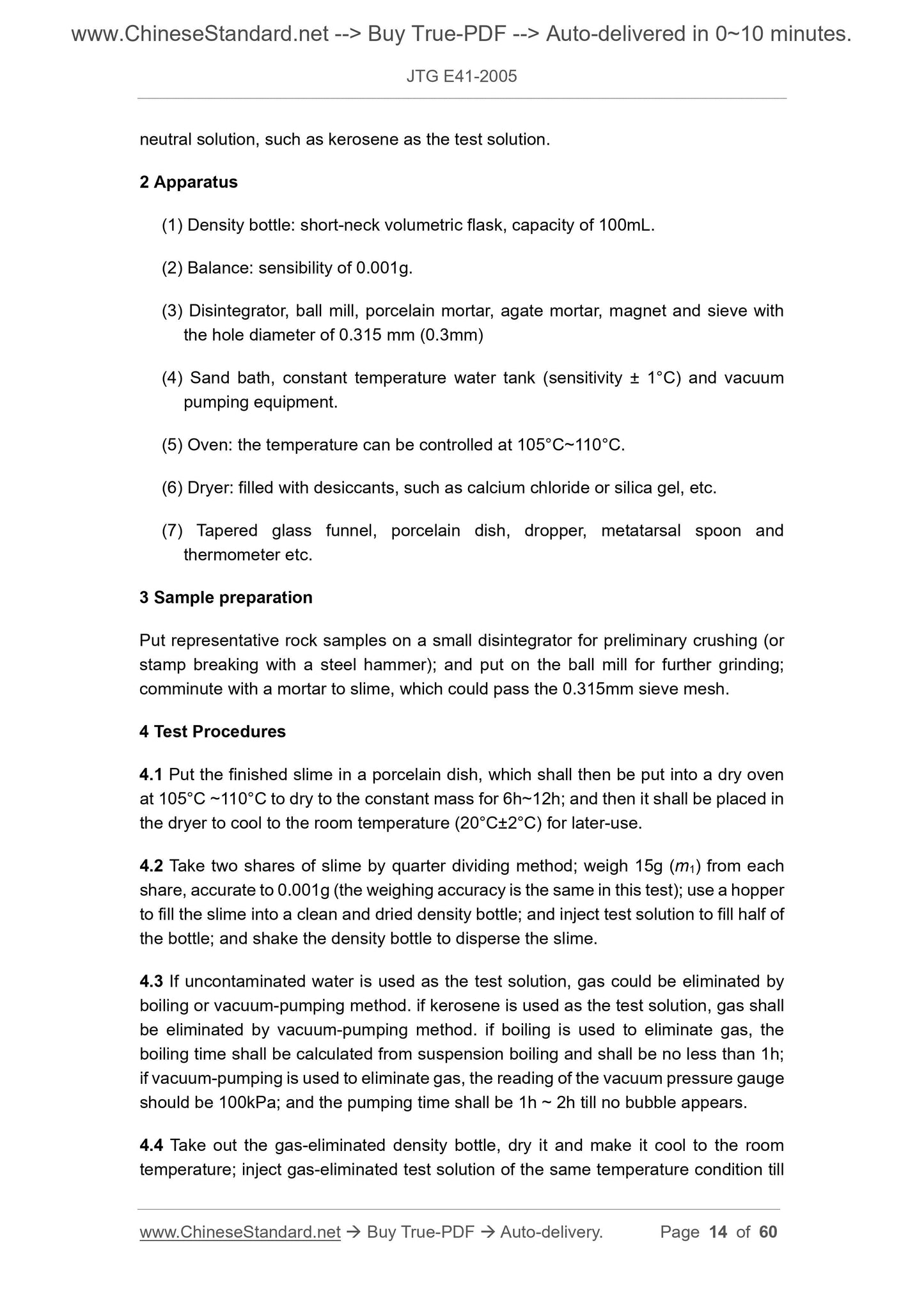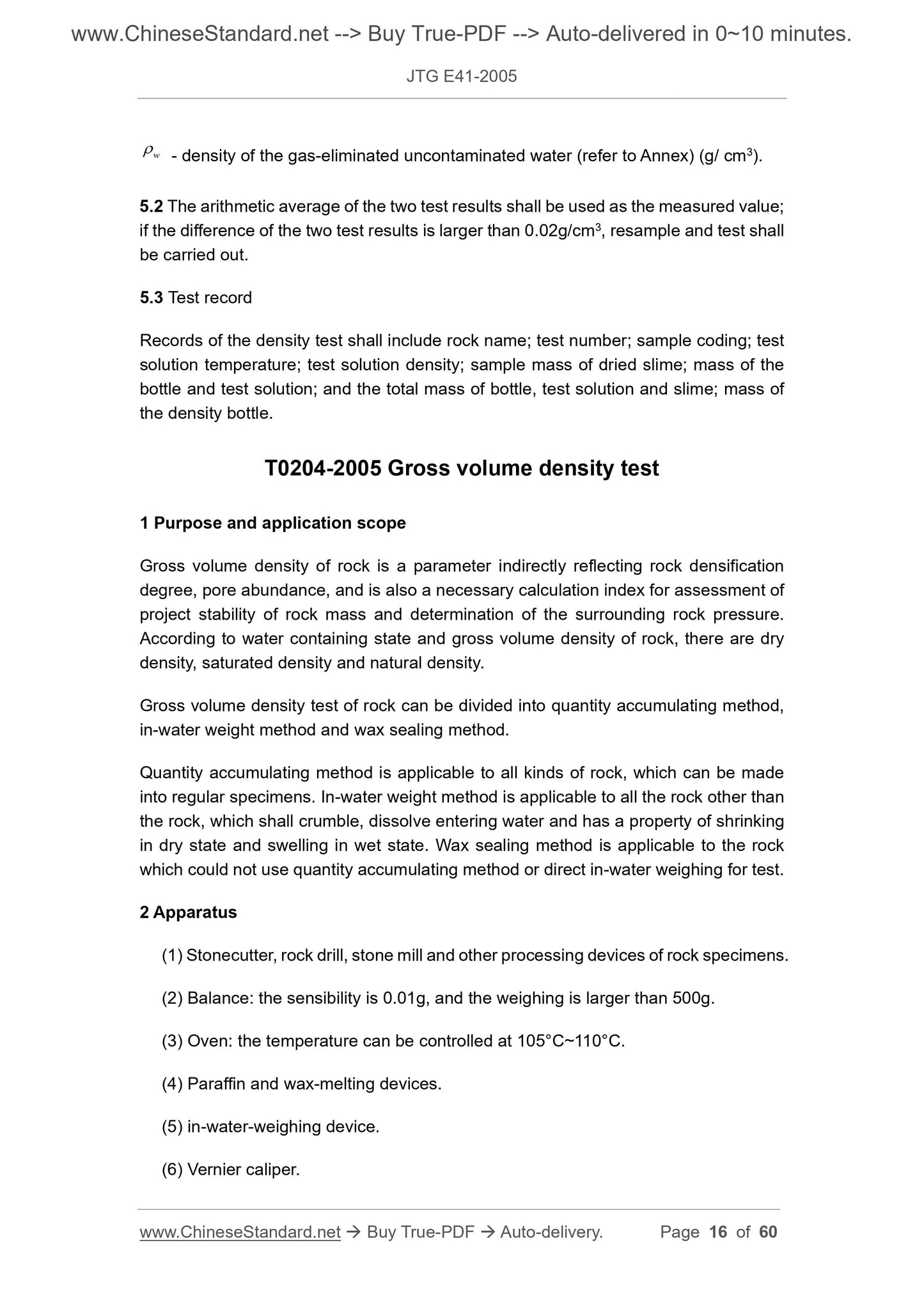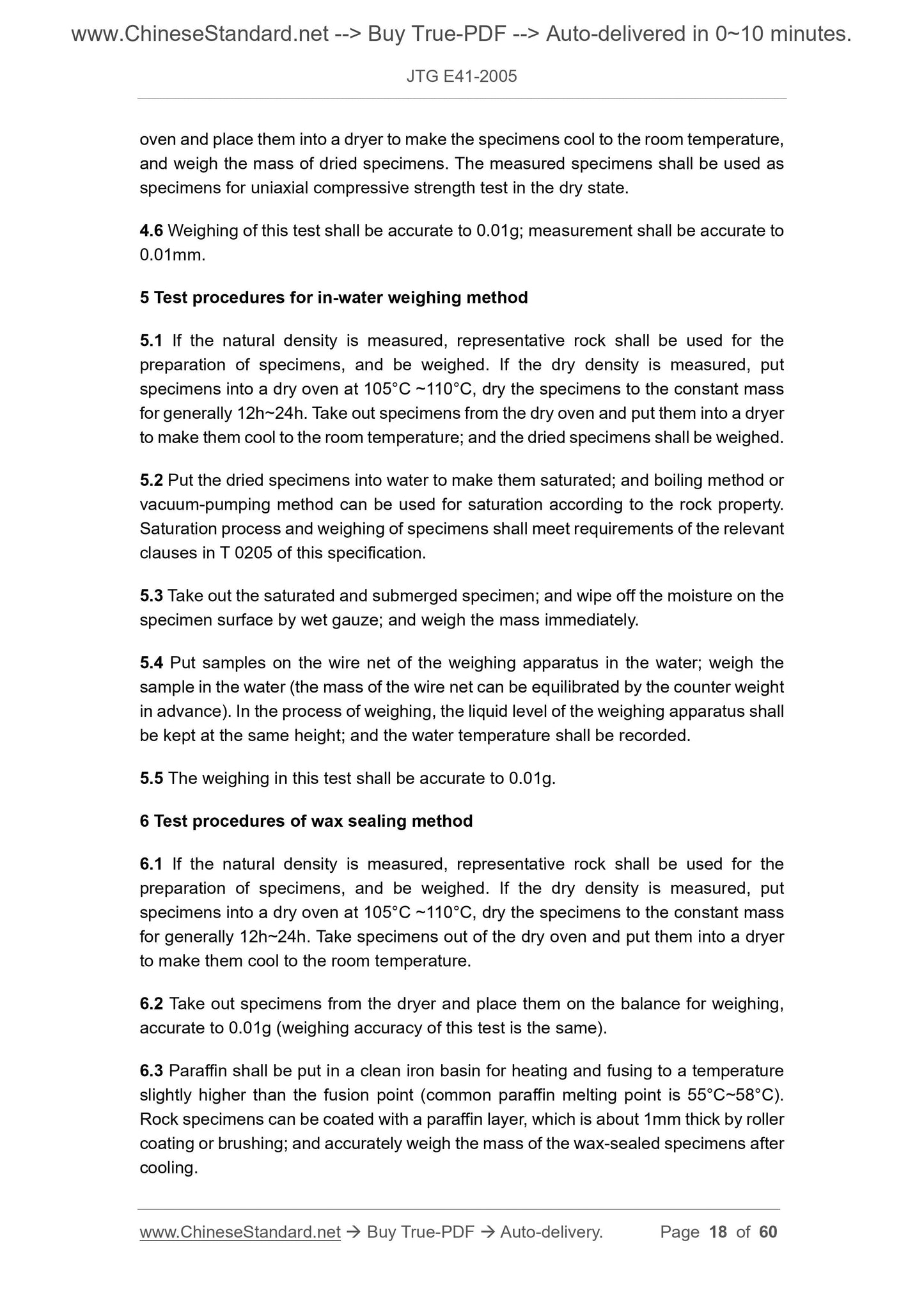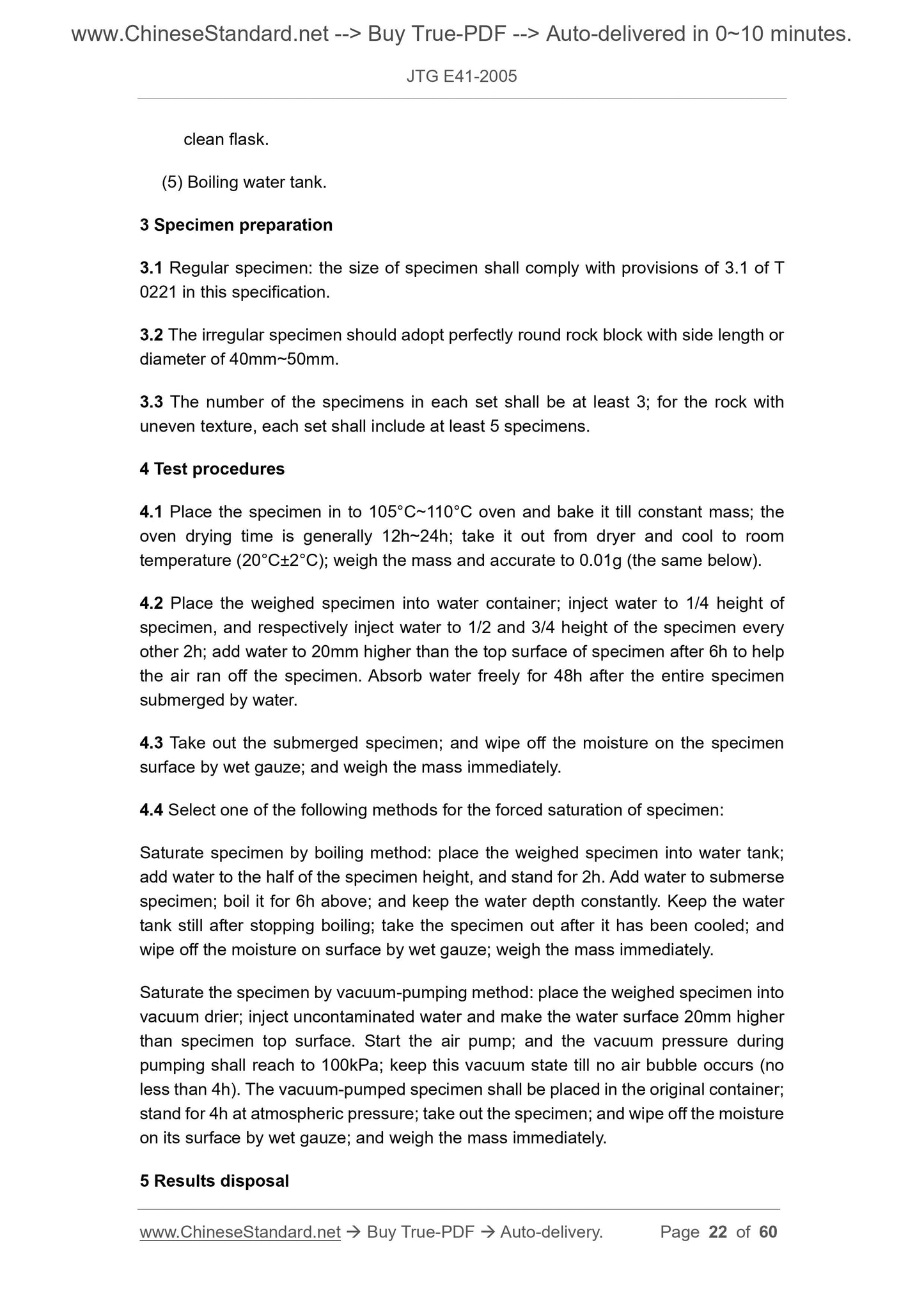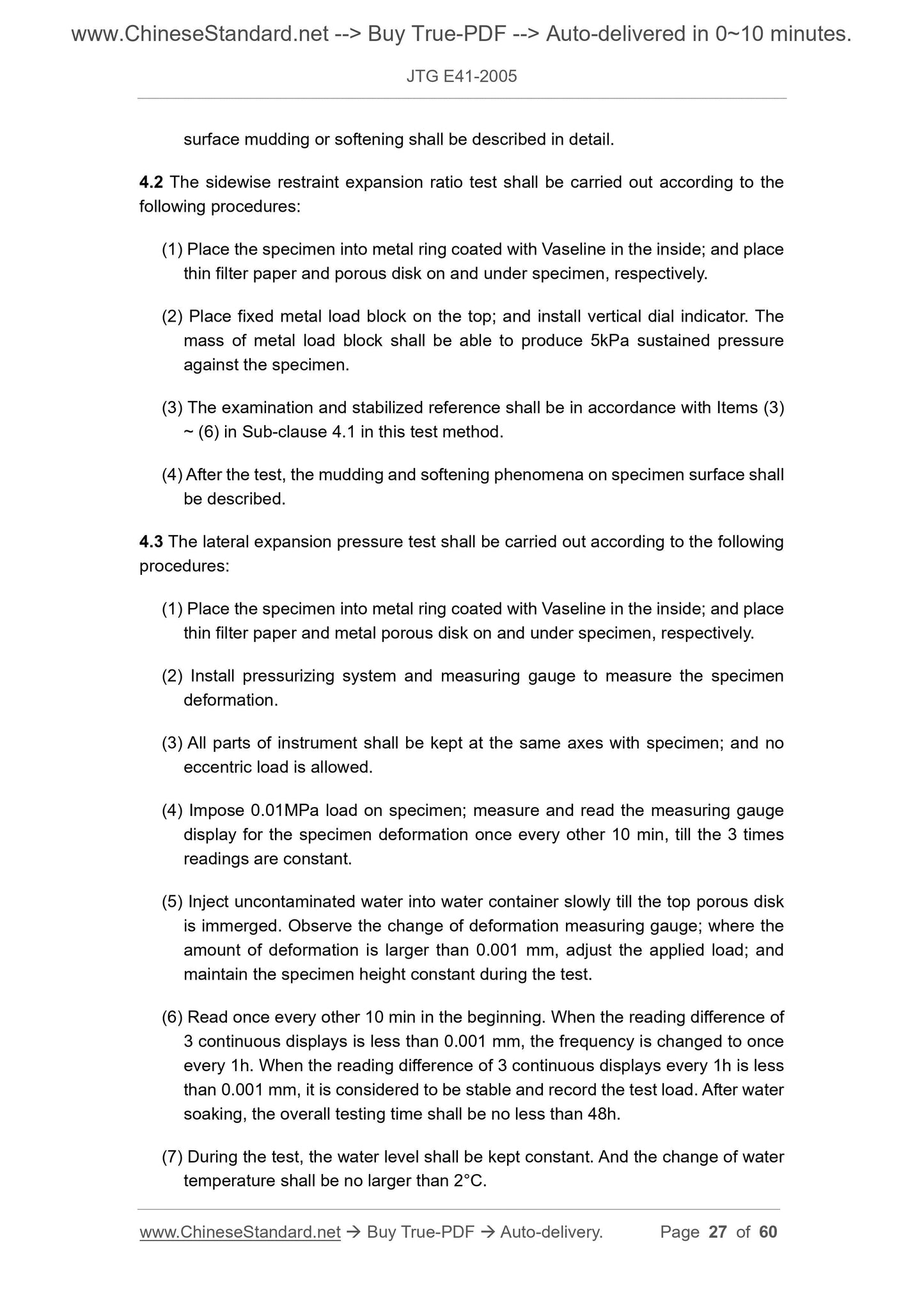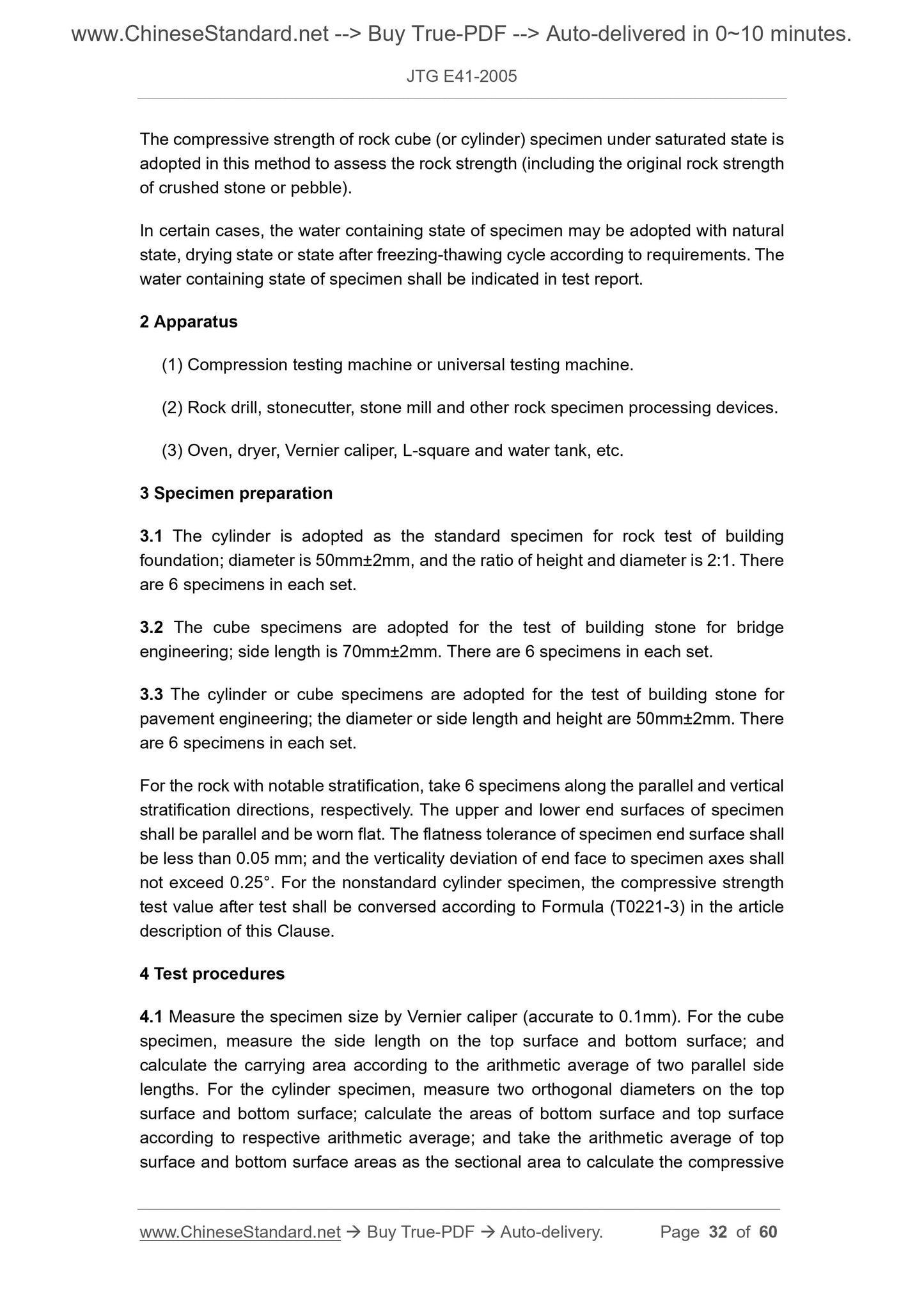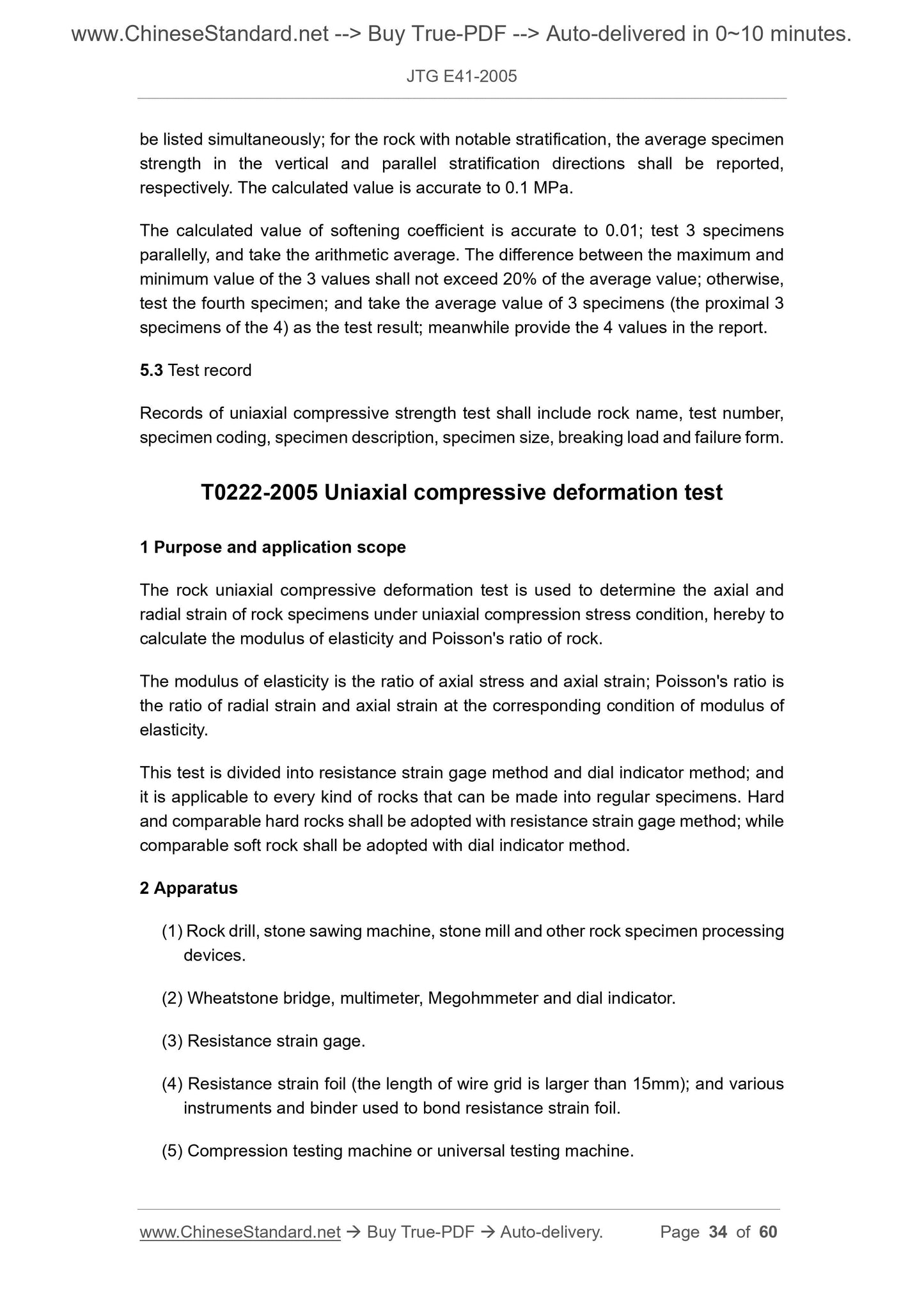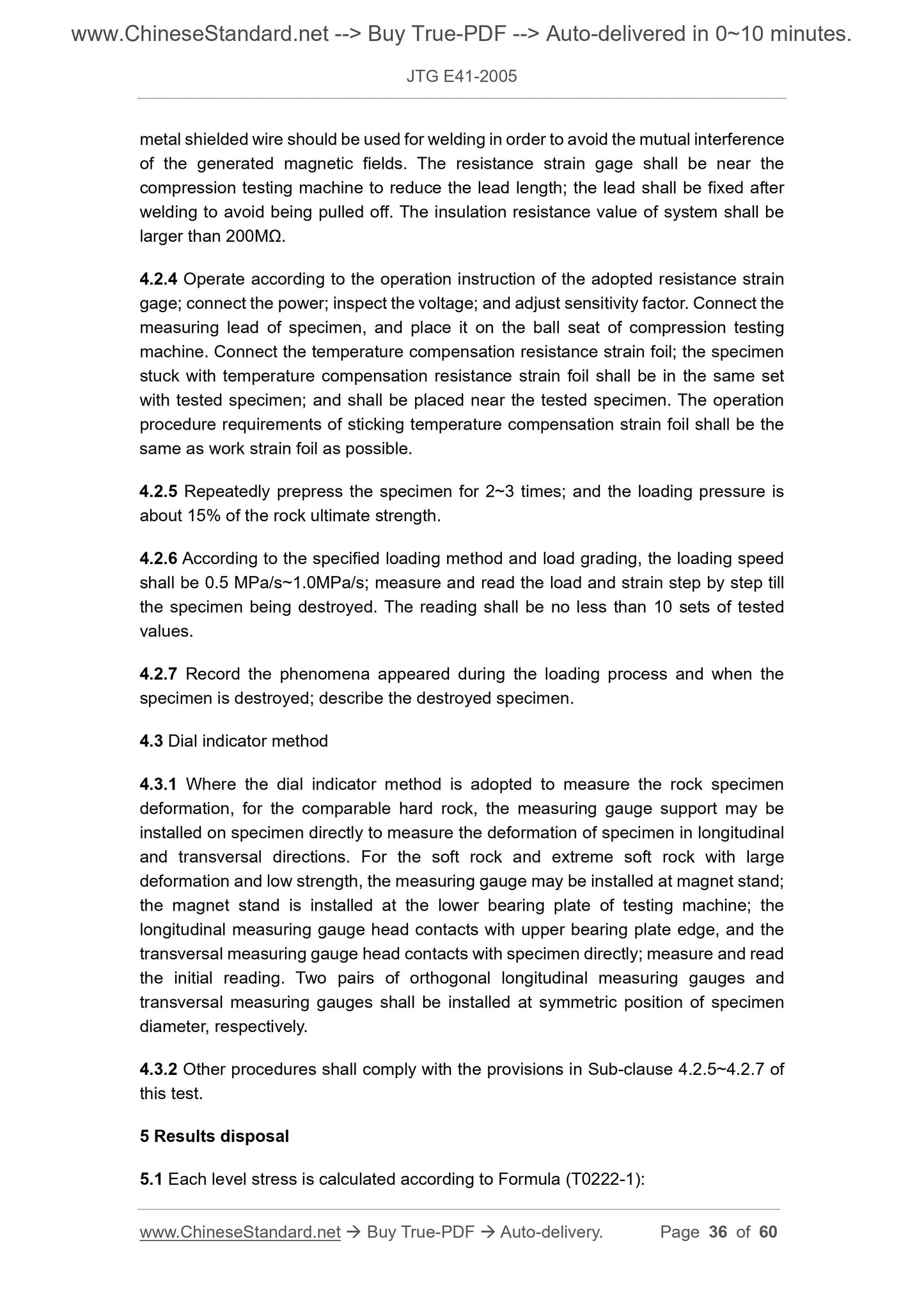1
/
of
12
www.ChineseStandard.us -- Field Test Asia Pte. Ltd.
JTG E41-2005 English PDF
JTG E41-2005 English PDF
Regular price
$305.00
Regular price
Sale price
$305.00
Unit price
/
per
Shipping calculated at checkout.
Couldn't load pickup availability
JTG E41-2005: Test Methods of Rocks for Highway Engineering
Delivery: 9 seconds. Download (and Email) true-PDF + Invoice.Get Quotation: Click JTG E41-2005 (Self-service in 1-minute)
Newer / historical versions: JTG E41-2005
Preview True-PDF
Scope
1.0.1 This specification is formulated to unify the test methods of rocks for highwayengineering
1.0.2 This Standard is applicable to rock test for engineering of subgrades, pavements,
bridges and culverts and tunnels in highway engineering.
1.0.3 Instruments used for test in this specification shall be proved as qualified by
relevant national detection mechanisms and meet requirements in this specification.
1.0.4 Test subject of rock shall have geological representatives; and test content, test
methods and technical specifications shall meet basic requirements and
characteristics of exploration survey, design and construction of the highway
engineering. Test for stress and deformation of rock mass shall be carried out
according to relevant current national standards.
Basic Data
| Standard ID | JTG E41-2005 (JTGE41-2005) |
| Description (Translated English) | Test Methods of Rocks for Highway Engineering |
| Sector / Industry | Highway and Transportation Industry Standard |
| Classification of Chinese Standard | P66 |
| Classification of International Standard | 93.080 |
| Word Count Estimation | 61,665 |
| Date of Issue | 2005-03-03 |
| Date of Implementation | 2005-08-01 |
| Older Standard (superseded by this standard) | JTJ 054-1994 |
| Regulation (derived from) | Ministry of Transportation Notice 2005 No. 3; Ministry of Transport Notice No. 66 of 2011 |
| Summary | This standard applies to highway engineering roadbed, road, bridge and tunnel projects such as rock test. |
Share
